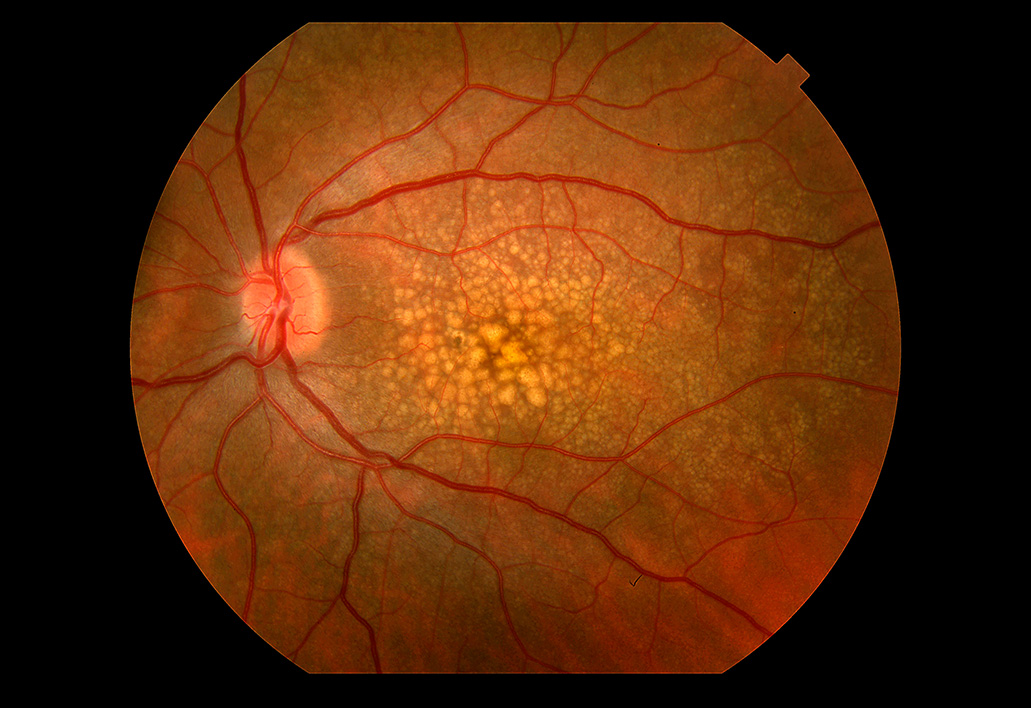Macular Degeneration
Understanding Macular Degeneration: Causes, Symptoms, and Treatment
What is Macular Degeneration?
Macular degeneration is a group of degenerative diseases that progressively damage the retina, leading to a gradual, painless loss of central vision. This condition affects the ability to see fine details, recognize faces, drive, and read, often impacting daily activities. Most commonly affecting those over 50, macular degeneration (MD) becomes more prevalent with age, affecting about 1 in 10 Australians over 50 and up to 30% of people over 80.
Symptoms of Macular Degeneration
- Distortion of objects, such as wavy or bent lines
- Black, blurry, or missing patches in central vision
- Difficulty recognizing faces
- Challenges with reading, as lines may appear wavy or distorted
- Slowed adaptation to dim lighting (e.g., entering a dark room after bright sunlight)
Macular degeneration symptoms often progress slowly over many years, with vision loss occurring later in the disease. However, sudden changes like blurred or dim central vision, or visual distortion, warrant immediate attention.
Distortion & Loss of Central Vision (Scotoma)
If you experience any of these symptoms, contact the Clinic at 9411 5000 immediately and specify your symptoms to be seen urgently. These symptoms may indicate the presence of an abnormal blood vessel under the retina, known as a choroidal neovascular membrane (CNVM) or "wet" macular degeneration, which, though less common, leads to the most severe vision loss in MD. Early treatment can stabilize and even improve vision, with the best outcomes achieved when treatment begins promptly.
How Macular Degeneration Affects the Eye
Macular degeneration arises when the supportive layer beneath the retina, the retinal pigment epithelium (RPE), begins to deteriorate. This layer supports retinal health, and its degeneration disrupts retinal function. Waste products from the retina accumulate in the RPE, impairing its function and forming deposits called drusen beneath the retina. Over time, both the RPE and retina wear down, leading to tissue atrophy.
In some individuals, the weakened RPE allows abnormal blood vessels to grow beneath the retina, a condition known as wet AMD or CNVM. This abnormal vessel can leak fluid and blood, leading to scar formation that damages the macula and causes severe vision loss if untreated.
Treatment Options for Wet AMD
Treatment of wet AMD is highly effective and aims to control abnormal blood vessel growth. It typically involves a course of anti-VEGF injections (e.g., Lucentis, Eylea, Vabysmo, Beovu, or Avastin) directly into the eye. These medications block specific chemicals that promote abnormal blood vessel growth, stabilizing vision for most patients and even significantly improving it in about one-third of cases. Early detection and treatment yield the best outcomes.
Our specialists use advanced imaging technology to detect and monitor wet AMD and provide expert care to maximize vision while minimizing treatment risks.
Preventing Macular Degeneration
While there is no definitive treatment for early AMD, certain measures may help reduce the risk or slow progression:
- Don’t smoke: Smoking significantly increases AMD risk.
- Healthy diet: A diet high in vegetables, fruits, and fish, with low intake of fats, has been shown to reduce the risk of AMD.
- Sun protection: Wear a hat and sunglasses outdoors.
- Regular eye exams: Have routine exams with an ophthalmologist, especially if early AMD signs are present (like drusen).
- Antioxidant supplements: High-dose antioxidant vitamins, including Vitamins C and E and zinc, have been shown to slow AMD progression. Products such as Macu-Vision Plus or Macutec may be beneficial.
Home Monitoring with the Amsler Grid
The Amsler Grid is a simple tool for checking AMD symptoms at home or during an eye exam. To use it:
- Wear your usual reading glasses.
- Cover one eye with your hand.
- Focus on the center dot from about 33cm away.
- Look for distortion, broken lines, or dark patches.
- Repeat with the other eye.
Regular Amsler Grid checks help detect early symptoms of wet AMD, allowing for prompt evaluation and treatment.

